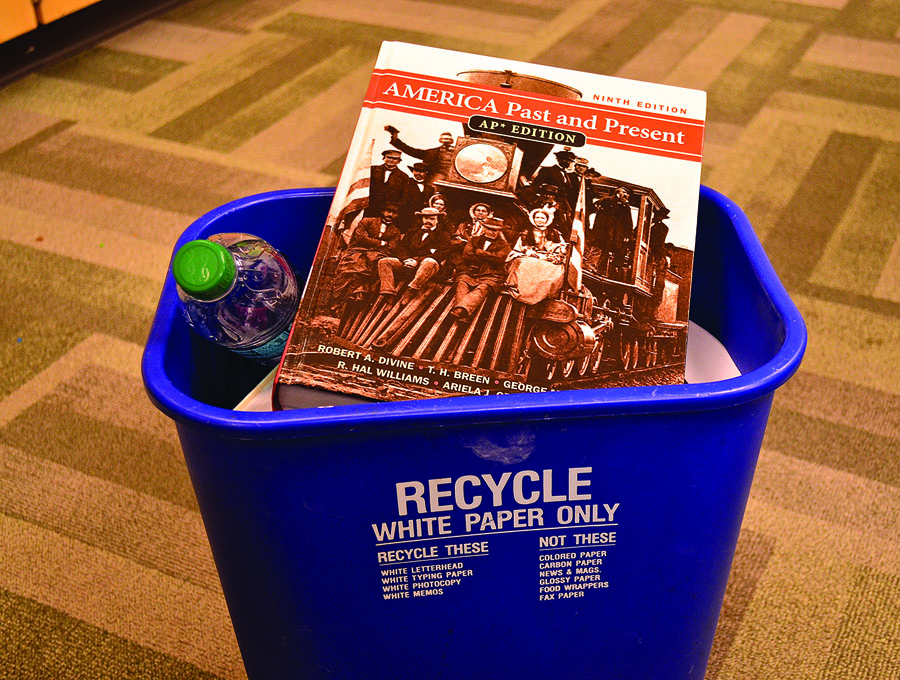
Last June, as students and faculty welcomed summer vacation, Robert Gallivan and
Robin Sheperd, AP United States History teachers, prepared for a busy summer redesigning the course’s curriculum.
Changes in the exam format for AP United States History, also known as APUSH, necessitated the class’ restructuring, Gallivan said. This year’s students will be the first to take the new test in May, according to the website of the College Board, which designs and administers AP tests.
Whereas past exams did not stress specific time periods or historical themes, the redesigned test emphasizes key concepts that the class explores in-depth using historical evidence, Sheperd said.
“[The College Board] was responding to student and teacher feedback that [the course] was feeling like a march through time, and the emphasis was so much on content that there wasn’t room for the historical thinking skills,” Sheperd said.
The test’s focus on certain content means that students must know in detail the administrations of only six presidents: George Washington, Woodrow Wilson, Abraham Lincoln, Franklin Roosevelt, Lyndon Johnson and Ronald Reagan. For previous exams, students had to be familiar with about half of the presidents, according to Gallivan.
Despite the test’s content requirements, Sheperd said teachers will include what they think is necessary “to teach a great U.S. history course.”
“We want students to be enthusiastic about what they are learning and have some sort of interest in what is going on in our world today,” said Gallivan. “We also want to meet the requirements for the College Board and meet our goals.”
While the revised test limits conceptual themes, it expands the time periods covered, Gallivan said. The essay portion of the exam now covers history before Christopher Columbus’ arrival through 2012, Sheperd said.
The new test also replaces 80 multiple choice questions with 55 stimulus-based multiple choice questions, Sheperd said. These questions ask students to apply their knowledge to primary documents, such as a political cartoons or historical conversation.
These changes stress critical thinking that incorporates factual knowledge because the College Board wants students to become “apprentice historians,” Sheperd said.
Gallivan and Sheperd are enthusiastic about the changes.
“I am excited,” said Gallivan. “I like it when new things happen. I’m even more excited to see what the test is like for students when [the AP test] rolls around.”
Sheperd said she enjoys the freedom to dive more deeply into specific topics and have students do more of the work of historians.
The changes have not affected enrollment. Figures supplied by Sheperd show 105 students enrolled in the class now versus 101 enrolled last year.
“[APUSH] has been harder than other AP classes I have taken because it is unforgiving, but the difficulty doesn’t bother me,” said junior Leopold Mayer, who is enrolled in the course. “I took the class to get college credit.”
Senior Chris Zhang, who took the course last year, said the changes would not have persuaded him to take a different history class. He took it for college credit and to challenge himself.
According to Sheperd, APUSH teachers around the country are reacting to changes to the test.

